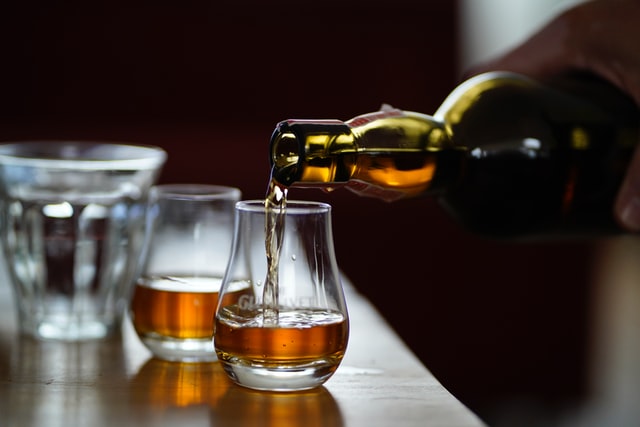READ NEXT
What is a geographical indication (GI)?
A GI can be protected as a certification trade mark (CTM) with us, or protected under the Wine Act.
GIs protected under the Act are registered with Wine Australia and captured in the Register of Protected Geographical Indications for wines.
A GI registered as a CTM indicates to consumers a product comes from a specific geographical region and therefore has a distinctive set of qualities or reputation attributable to that region.
GI rules may include:
- How a product is made
- What ingredients are used
- The environmental or agricultural features of the region which give the product distinctive qualities
- A strong reputation in the region for producing a particular product of a certain quality.
The owner of the CTM GI is responsible for ensuring the GI is only used by producers who follow its rules.
Examples of CTM GIs
The following GIs have been registered as CTMs in Australia.
Benefits of a CTM GI
Unlike standard trade marks, which protect your brand, a CTM GI indicates the product comes from a specific region and therefore has certain qualities. GIs can be used to stop others from free-riding on a regional product's reputation, and once well recognised, can create expectations over and above your brand. This can attract a premium price.
This means a CTM GI can be a powerful marketing tool, and one that grows in value as consumer recognition increases.
It also provides ongoing protection to all whose goods are covered by the CTM GI. It prevents other traders with inferior quality from using it, which might undermine the valuable reputation of goods produced in a particular way in a certain region.
How long does a CTM GI last?
GIs registered as a CTM last for ten years from the filing date and may be renewed towards the end of that period.
If it's not renewed, registration will lapse and protection will cease.
Is my region eligible for a CTM GI?
To be eligible for registration as a CTM GI, the location must have a reputation for special characteristics attributed to the area that affect goods produced there — implying distinctiveness.
Not all locations imply special characteristics.
For example:
A strawberry grower in Brisbane may wish to promote his fruit as Brisbane strawberries. Even if these strawberries are grown in Brisbane, this alone does not make ‘Brisbane’ a CTM GI.
The strawberries would also need to have some special characteristics or a certain reputation (such as sweeter, or larger, or fewer seeds) that's attributable to the climate, soils or production techniques of the Brisbane area.
It's this link between the special characteristics of the strawberries and the geography or reputation of the region that creates a CTM GI.
How do I apply for a CTM GI?
Applying for a geographical indication can be a complex process. So if you're seeking protection of CTM GI, we recommend getting advice from a registered trade mark attorney.
As part of your CTM GI application, you'll need to:
Each CTM GI application must be accompanied by a set of rules. You must decide the precise geographical location that your CTM GI covers, as well as any requirements for production or quality standards that goods must meet to qualify for use of your CTM GI.
Specifically, your set of rules must cover:
- The certification requirements that goods must meet to qualify for the CTM GI
- The requirements that an owner or approved user of the certification trade mark must meet to use the certification trade mark
- A process for determining whether goods meet the certification requirements
- Attributes that someone must have to be approved to assess whether goods meet the certification requirements
- Other requirements about the use of the CTM GI by the owner or approved user
- A procedure for resolving a dispute about whether goods meet the certification requirements
- General procedures for resolving any disputes.
While any legal entity can apply for and own a CTM GI, you should give some thought to who would be best placed to own it, given the need to promote, control and enforce the right over its lifetime.
The CTM GI owner can be:
- A group of producers within a region who form an incorporated association
- A central organisation
- A local or state authority.
How to manage a GI
A GI only develops and maintains value if it is managed well over its lifetime.
CTM GI owners need to:
- Market the CTM GI to raise its reputation
- Raise awareness among consumers as to why the CTM GI goods are better than similar goods from elsewhere
- Oversee use of the CTM GI to ensure approved traders continue to comply with the rules
- Monitor any unauthorised use of the CTM GI for infringement
- Have access to civil remedies against infringements including injunctions and damages.
An IP specialist, such as a trade mark attorney, can advise you of your enforcement options.
In Australia, a GI registered as a CTM can be cancelled on a number of grounds, including:
- It's not capable of distinguishing
- It's confusingly similar to an earlier trade mark or CTM GI
- It's likely to deceive or cause confusion
- It's known as the generally accepted description or name of the relevant good or has become generic
- The owner is no longer competent to certify
- The CTMs rules are detrimental to the public
- The owner or approved user fails to comply with the CTMs rules.




